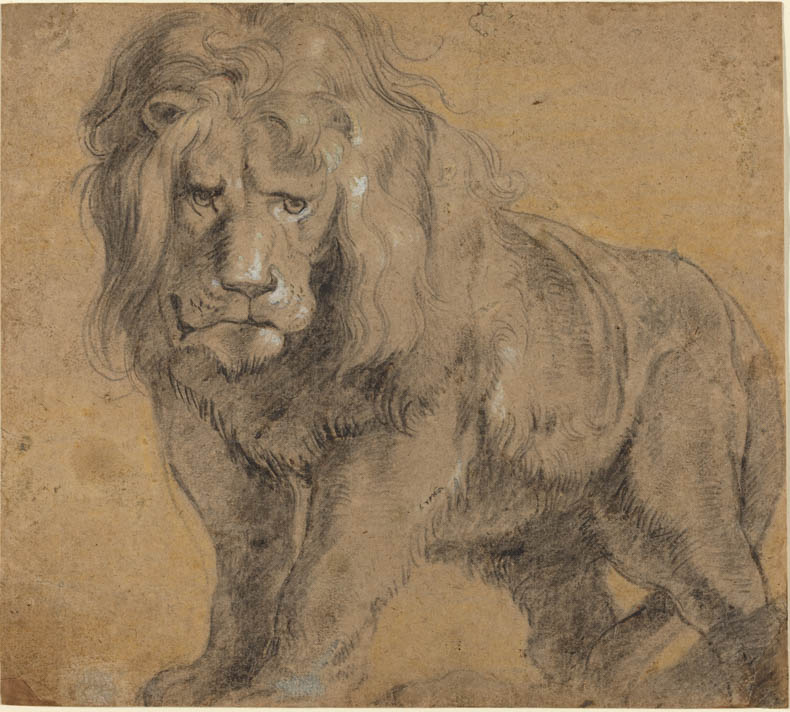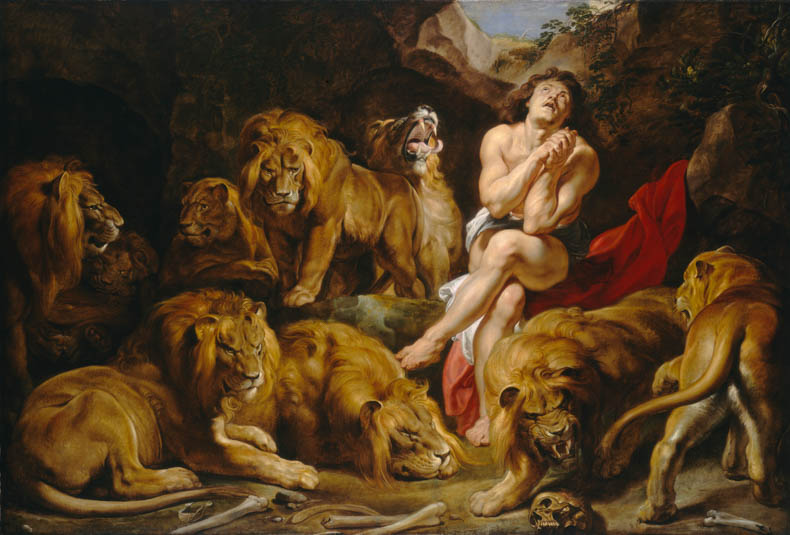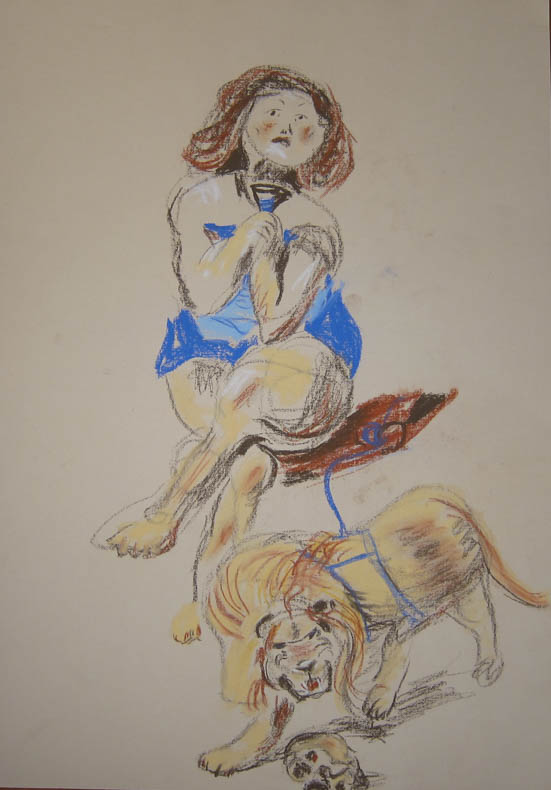
Early in the 17th century, two lions lived in the zoo in Ghent. Their names were Flandria and Brabantia. There were probably other lions nearby. Archduke Albert and his wife, Isabella, ruled the region, now in Belgium, and they had a menagerie at their palace. Having a menagerie was the sort of thing extremely wealthy people went in for at the time.
One way or another, the artist Peter Paul Rubens found his way to some live lions, put chalk to paper, and created images. The lions he drew are expressive and realistic, with manes and teeth. (Read more about them in this book.)
Rubens was a very influential painter, with a busy studio in Antwerp, and his lion drawings survived. The British Museum has a couple, and one (above) is here in Washington, D.C., in the permanent collection of the National Gallery of Art. It hasn’t been on display since a temporary exhibit in 1998, but you can make an appointment to visit it.
You don’t have to make an appointment to visit the final work that these lions ended up in, though. It’s Daniel in the Lions’ Den, a massive painting that hangs on the dark-paneled wall of Gallery 45, in the museum’s West Building.

The painting is huge, 12 feet wide and more than 9 feet wide. It’s so big that Rubens joined two pieces of canvas to make it; the join is visible, if someone tells you to look for it, a horizontal line cutting through the bodies of the lions and man.
I’ve seen that painting countless times since childhood. It’s massive, packed with near-life-sized lions. It sticks in the memory. I only noticed the line because someone did tell me to look for it, on Sunday afternoon.
I was there for one of the museum’s regular Drawing Salons, in which a museum educator and a studio artist talk about the history of a particular painter or era, introduce some artworks, then put participants to work on various drawing exercises. This Sunday that included a quick sketch to capture the general layout of the painting and a longer opportunity to try to capture the expression of one of the lions.
I’ve been to several of the events now (they recognize me when I pick up my art supplies) and I love the opportunity to look really hard at one or two works of art. I’ve gotten the tiniest beginnings of an understanding of what goes into creating a monumental artwork like this one–and had lots of opportunities to feel frustrated by the limitations of my own drawing skills.
For our last exercise, we were instructed to pick one of the paintings in the room and bring something contemporary to it. I was pretty sure I didn’t have the vision or the skill to pull off some kind of modern variation on something I could barely get my head around in the first place. I was in luck, though; my failure to copy Daniel’s face—there was a lot of glare, and faces are hard—plus a second failure around the hip region, led me down an amusing path.

The prayerful Daniel, a paragon of faith, morphed into Daniela, with her blue martini, her pet lion, and the skull of the last man who tried to mess with her.
Flandria, Brabantia, or whatever lions Rubens saw, lived on this Earth only a few years. Four hundred years later, their likenesses are in museum collections, on the wall, in countless prints and postcards and websites, and on my dining room table. I suppose that’s the nature of being painted. Who would remember the subject of the Mona Lisa if she hadn’t sat for that portrait? It particularly amuses me to think of these lions, though. They played no active part in the process, but here they are, so specifically rendered, stalking and yawning and snoozing and snarling their way across more and more pieces of paper, through the centuries and around the world.
Photos: NGA; NGA; me.
I love your drawing! So many talents….